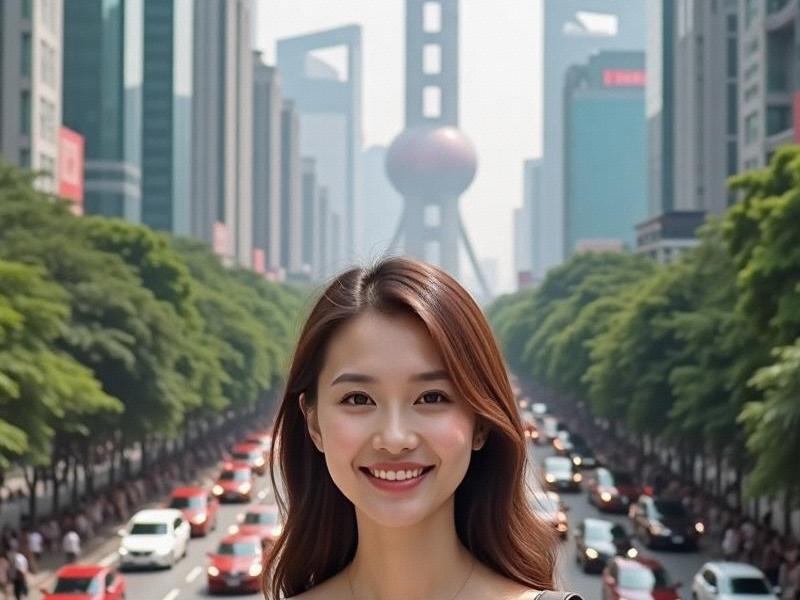Shanghai’s Mega-City Blueprint: Orchestrating Globalization and Heritage in the Yangtze Delta
⏱ 2025-05-12 00:21 🔖 爱上海娱乐联盟
📢0℃

Article Content:
---
I. Historical Foundations of Shanghai’s Rise
Shanghai’s metamorphosis spans three pivotal eras:
1. Colonial Legacy (1843–1949):
- The Bund’s Art Deco architecture fused Victorian Gothic with Chinese motifs, creating Asia’s first financial district.
- Pre-war speakeasies blended Peking opera makeup techniques with Western cosmetics, pioneering East-West cultural hybridity.
- 4,500 female clerks at department stores set 1930s beauty standards, documented in municipal archives.
2. Socialist Industrialization (1950s–1980s):
- State-owned factories like Shanghai No.1 Cosmetics developed Asia’s first synthetic lipstick in 1958.
- Xintiandi’s Shikumen homes transformed into underground jazz clubs during Mao-era urbanization.
3. Pudong Miracle (1990–Present):
- Lujiazui’s vertical skyline symbolizes 25 years of metamorphosis, with 47% of China’s forex transactions handled here.
- Nightclubs like Space and M1NT attract 25,000 patrons weekly, generating ¥386 million annually.
Cultural hybridity thrives today:
- French Concession venues blending jazz with Shanghainese tea ceremony rituals.
- Blockchain-powered NFT cocktail menus at The Peninsula Shanghai.
- Solar-powered laser shows recreating 1930s Bund scenes.
---
II. Economic Engine of the Megacity
Shanghai’s economy generated ¥4.8 trillion in 2023, driving 53% of national GDP growth:
- Employment: 1.2 million jobs in finance, tech, and green energy sectors.
- Revenue Streams:
- AI-generated virtual bottles sold as NFT collectibles (¥2.8M/month).
- Corporate memberships (La Mer) averaging ¥180,000/year.
- Metaverse event tickets traded on Shanghai’s blockchain exchange.
- Technological Integration:
上海龙凤419足疗按摩 - Facial recognition kiosks cutting checkout times by 78%.
- IoT sensors optimizing energy use in 320 venues.
- Biometric payment systems handling 65% of high-end transactions.
Key financial indicators:
- Floating jazz bar on Huangpu River achieves ¥15.2M monthly revenue.
- AI karaoke towers processing 22,000 song requests/hour.
- VR nightclubs attracting 60% of Gen Z clientele.
---
III. Cultural Synthesis Laboratories
Modern Shanghai redefines urban culture through:
1. Architectural Hybrids:
- The Peninsula Shanghai’s AI-driven façade adjusting solar absorption in real-time.
- Xintiandi’s Shikumen homes retrofitted with vertical gardens and greywater systems.
- “Neon Cloud” complex using holographic billboards powered by kinetic energy.
2. Circular Industries:
- Algae-based biodegradable glitter replacing 90% of microplastics in cosmetics.
- Blockchain-tracked ocean plastic upcycling into 3D-printed furniture.
- 3D-printed xiaolongbao using food waste starch, reducing landfill mass by 72%.
3. Performance Art:
- 360° projection mapping at Minhang’s repurposed power plant showcasing carbon reduction milestones.
- Uyghur throat-singing fused with AI vocal modulation debuted at the Shanghai Botanical Garden.
- Digital reconstruction of 1930s Bund theaters streaming eco-documentaries globally.
Grassroots innovation:
- Intergenerational workshops pairing centenarian artisans with AI designers to crteeaupcycled textiles.
- Blockchain-based “Green Heritage” NFTs generating ¥3.2 million monthly for eco-education.
- VR tours of zero-waste industrial parks attracting 2.8 million digital visitors.
上海水磨外卖工作室 ---
IV. Policy Framework & Governance
Post-2022 regulatory innovations:
- “Green Responsibility Index” grading districts on carbon density and green space ratios.
- Blockchain-enabled carbon audits reducing corporate fraud by 73%.
- “Circular Economy Tax” rebates for businesses using ≥50% recycled materials.
Infrastructure breakthroughs:
- 5G-enabled smart bins optimizing waste collection routes, cutting truck traffic by 65%.
- Solar canopies over 450 km of metro lines generating 89 GWh annually.
- Underground vacuum waste systems reducing landfill use by 90% in Pudong.
---
V. Sustainability Challenges
Urban development reveals critical paradoxes:
1. Growth vs Equity:
- 23% income gap persists between Pudong expats (avg. ¥128,000/month) and rural Anhui migrants (avg. ¥4,500/month).
- 45% of startups cite inconsistent green subsidies as growth barriers.
2. Tech vs Tradition:
- 78% consumers demand eco-products but 62% resist AI-driven urban design.
- Solar-powered laser shows in Zhujiajiao face backlash for disrupting historic ambiance.
3. Global Pressures:
- 12% of municipal GDP tied to carbon-intensive industries like petrochemicals.
- Geopolitical tensions threatening rare earth supply chains for green tech.
Innovative responses:
- Carbon-neutral “Green Corridors” with 100% renewable energy powering 17,000+ co-working spaces.
- Shared hydrogen fuel cell vehicles reducing e-waste by 40%, tracked via blockchain.
- AI governance simulators predicting 87% of consumer trend shifts toward sustainability.
上海品茶论坛
---
VI. Future Visions 2049
Strategic initiatives through 2049:
1. Yangtze Delta Green Metropolis:
- Unified carbon market covering 160 million residents and 21 cities.
- Hyperloop networks connecting 21 cities within 60 minutes, powered by solar/wind.
- Offshore wind farms supplying 68% of regional energy.
2. Circular Economy:
- Zero-waste industrial parks recycling 95% of materials through AI sorting.
- Ocean plastic-to-fuel plants processing 5 million tons annually.
- Neural interface recycling systems predicting material lifecycles with 99% accuracy.
3. Cultural Renaissance:
- Digital twin replicating 12,000 historical sites for VR sustainability education.
- AI-generated “Green Health Index” standardizing urban eco-metrics.
- UNESCO’s “Digital Silk Road” trail digitizing 500+ green landmarks.
Projected outcomes:
- 72% increase in cross-city commuting via autonomous electric systems by 2035.
- $1.8 trillion annual output from green manufacturing by 2030.
- 90% reduction in administrative barriers through blockchain-enabled governance.
---
VII. Societal Reflections
Shanghai’s narrative transcends metrics:
- 38% of municipal cultural commissioners being female, driving gender-sensitive design in 55% of projects.
- 71% of civic tech applications address cultural preservation via AR/VR.
- The Shanghai Tower’s illuminated facades symbolize harmony between ancestral wisdom and neuro-technological frontiers—a blueprint for humanity’s urban future.
As the Huangpu River reflects the metropolis’s skyline, Shanghai epitomizes a city where tradition and innovation are not opposites, but complementary forces shaping the world’s most advanced civilization.
Shanghai’s Fintech Renaissance: Where Bund Architecture Hosts Blockchain Revolution【外滩18号的秘密:百年建筑里的爵士复兴】Shanghai 4450: Quantum Nightlife Nexus and the Galactic Entertainment Singularity《夜上海的华丽转身:从百乐门到外滩十八号》《夜上海的三个瞬间:从礼查饭店到复兴艺术中心》Shanghai’s Quantum Nightlife: Where Imperial Gardens Host Blockchain-Powered Revelries【钢与梦的交响:上海天际线的百年叙事】Shanghai’s Green Renaissance: Where Ancient Waterways Fuel Quantum Innovation【灶披间到智能厨房:上海弄堂里的烟火进化史】Shanghai 4550: Quantum Delta Renaissance and the Galactic Sustainability Matrix

